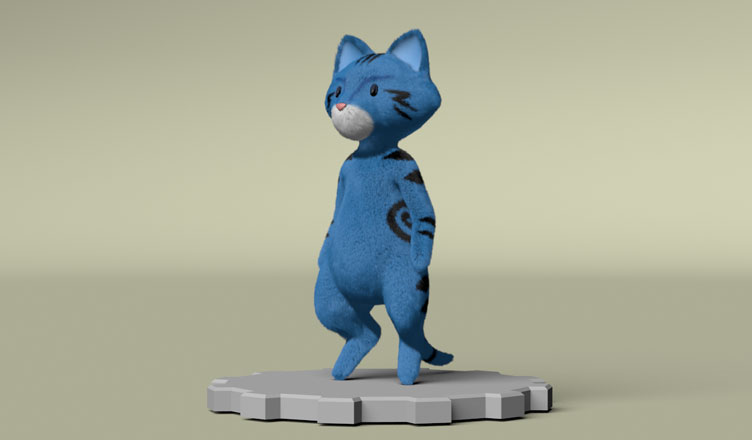Last week we visited Siggraph 2012, the big annual computer graphics conference here in Los Angeles. It was interesting to see some of the commercially manufactured desktop 3D printers available now, especially since we started building our own ‘homemade’ 3D printer last week. A year and a half ago, when we bought a MakerBot kit, it was essentially the only 3D printer available to hobbyists and tinkerers. Advances in tech sure move quickly these days.
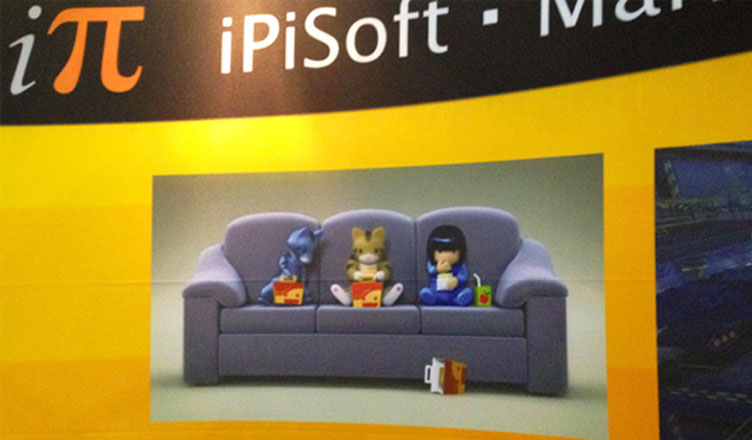
Over at the iPi Soft booth, we finally got to meet Michael Nikonov in person. Michael is one of the brilliant developers of iPi DMC, the motion capture system we used for ‘Happy Box’, so I was excited to see him. We only had time for brief introductions because Michael had to speak to the press and I had to run off to pick up our daughter from her day camp at the Natural History Museum. I thought we might see him again later for a longer chat but we never managed to get back to the show.
Also of interest to us was the unveiling of LightWave 11.5. (LightWave 10.1 is the animation program we created ‘Happy Box’ in.) For us, the highlight of the demonstration was seeing LightWave’s new Bullet based cloth dynamics and Genoma, a powerful but incredibly easy to use modular rigging system. These tools are going to be incredibly useful in our current and upcoming film productions. LightWave 11.5 is a free update for registered users of 11.0 and it will probably be available this winter.
When we got home, I started working on the Makerbot Thing-O-Matic’s Stepstruder, the part that will actually print our 3D objects. Here are some of the parts on the dining room table before assembly.

The Stepstruder’s body in mid-assembly.
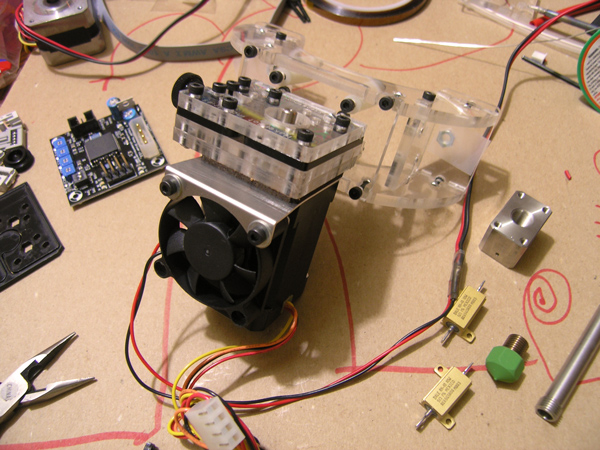
The parts for the Stepstruder’s Hot End, where the building material oozes out from.
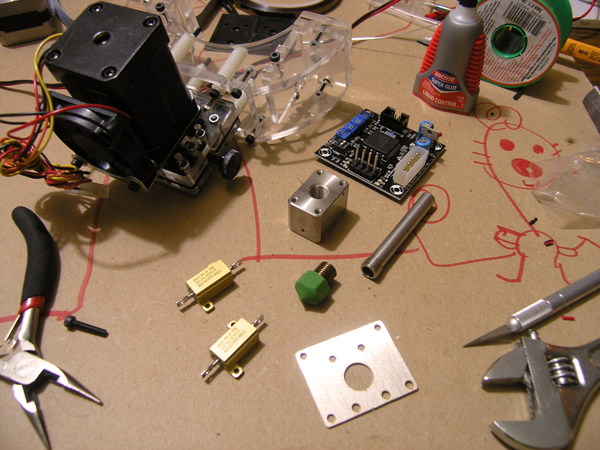
And here’s the completed Stepstruder.
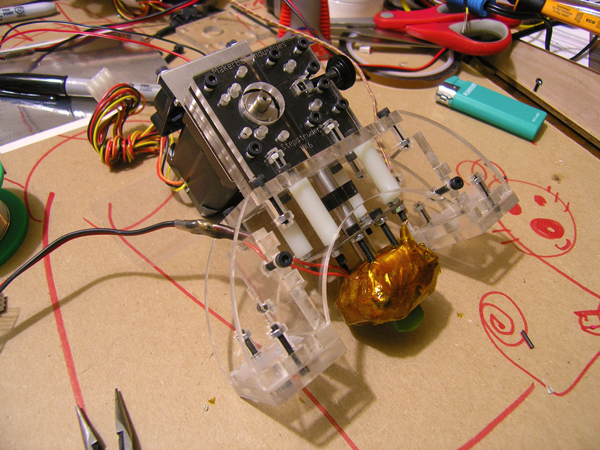
Building the Stepstruder was tricky. The instructions for this part is confusing because it was apparently written by multiple users, each with his own procedure for building it. For example, early on, the instructions show you how to assemble the Hot End, a part of which includes a metal tube called the Thermal Barrier. Then, later on, the instructions show you how to use the Thermal Barrier as cutting tool for a piece of ceramic tape. The problem now of course is that this metal tube is already inside the Hot End assembly. Nuts!
Oh, well. The Stepstruder is finally built and I’m mostly confident that it’s been done correctly. Moving on to the electronics now.
In case anybody is wondering, no, we hardly ever eat at the dinner table. In fact, the other half of the table is occupied by Alisa’s surger and sewing machine. Sometimes I think we live in a workshop instead of a house.
By the way, this was our one hundredth blog post. Yippee.


